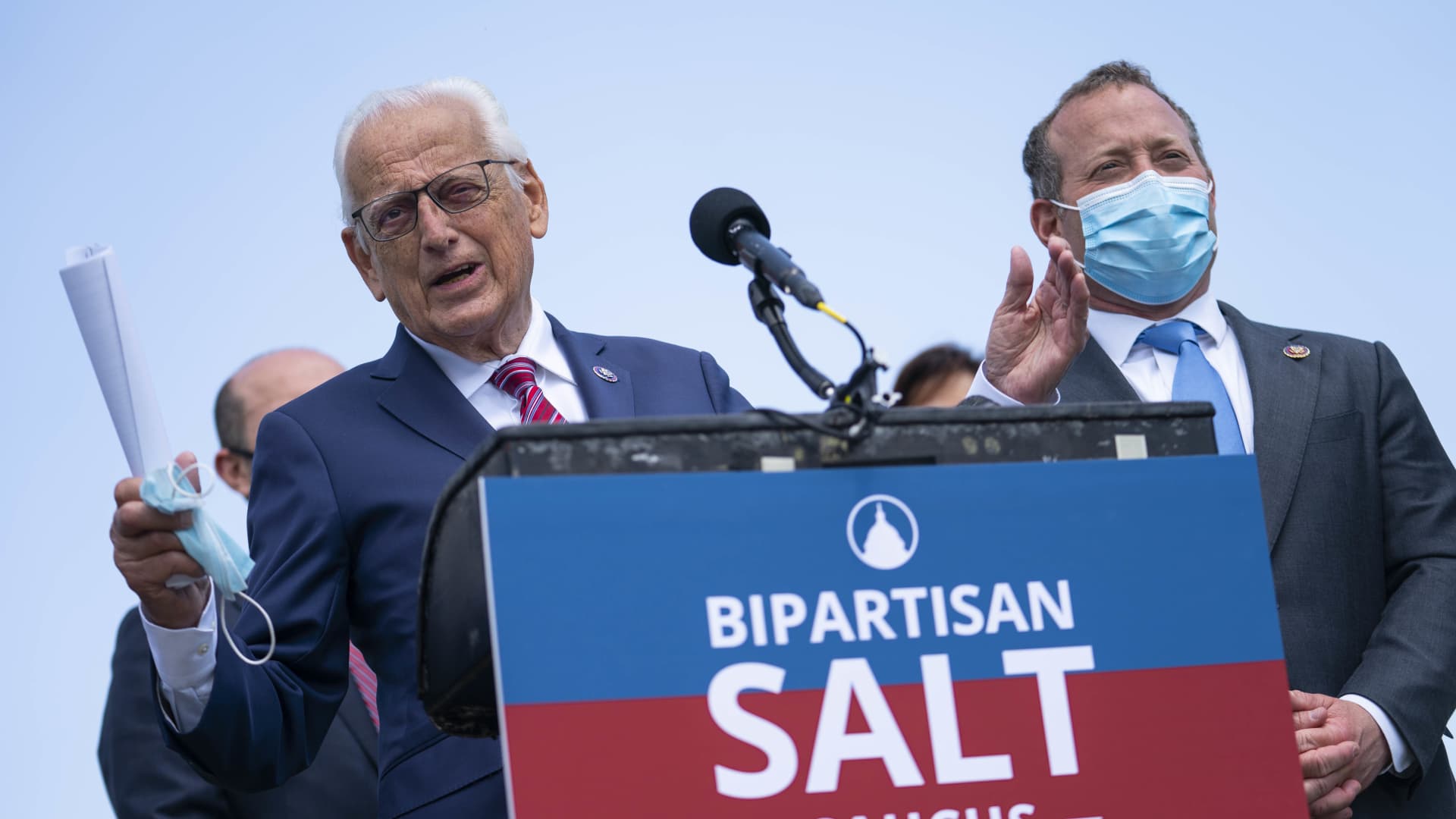Products You May Like
A group of bipartisan House representatives relaunched the SALT caucus last week, calling for relief from the $10,000 limit on the federal deduction for state and local taxes.
Enacted through former President Donald Trump‘s 2017 tax overhaul, the state and local tax cap has been a key issue for certain lawmakers in high-tax states, such as New York, New Jersey, California and Illinois, because residents can’t deduct more than $10,000 in state and local levies on their federal returns.
Without an act of Congress, the $10,000 limit will sunset after 2025, but members of the SALT caucus want to see changes sooner. They’ve also vowed to fight attempts to extend the cap.
“Restoring SALT will get more dollars back into the pockets of hardworking families who are already struggling with high cost,” Rep. Josh Gottheimer, D-N.J., SALT caucus co-chair, said at a press conference last week.
With a slim Democratic House majority, the SALT cap was a sticking point during Build Back Better negotiations, and lawmakers in November 2021 passed an $80,000 SALT cap through 2030 as part of their spending package. But Sen. Joe Manchin, D-W.Va., blocked the spending package in the Senate.
It may be difficult for SALT relief to gain traction
With more representatives from New York and a narrow House Republican majority, the SALT caucus hopes to make progress before the end of 2025.
Jamie Yesnowitz, principal of state and local taxes and national tax office leader at accounting firm Grant Thornton, said that repealing the SALT cap may be a challenge in the current Congress.
Proposals have included raising the limit, adjusting it based on income or eliminating it entirely. But without a unified approach, he said it will be difficult to gain traction.
“Right now, there’s just too much to choose from,” Yesnowitz said.
“The first step is to try and find one approach that can move forward,” Yesnowitz said. “But even after that, there’s the question of when it can be brought to a vote because there are just not that many opportunities.”
“I don’t see a path forward right at the moment,” he added, pointing to more pressing issues like the debt negotiations. “But you never say never in these situations.”
More than 30 states have a SALT cap workaround
Meanwhile, more than 30 states and local jurisdictions, including New York City, have enacted a workaround for owners of so-called pass-through businesses, such as partnerships, S-corporations and some LLCs, according to Grant Thornton, and more may join in 2023.
It’s estimated the workaround may cost the federal government $50 billion in lost revenue by the end of 2025, with the biggest benefits flowing to pass-through business owners making $1 million or more, according to research from New York University School of Law professor Daniel Hemel.
